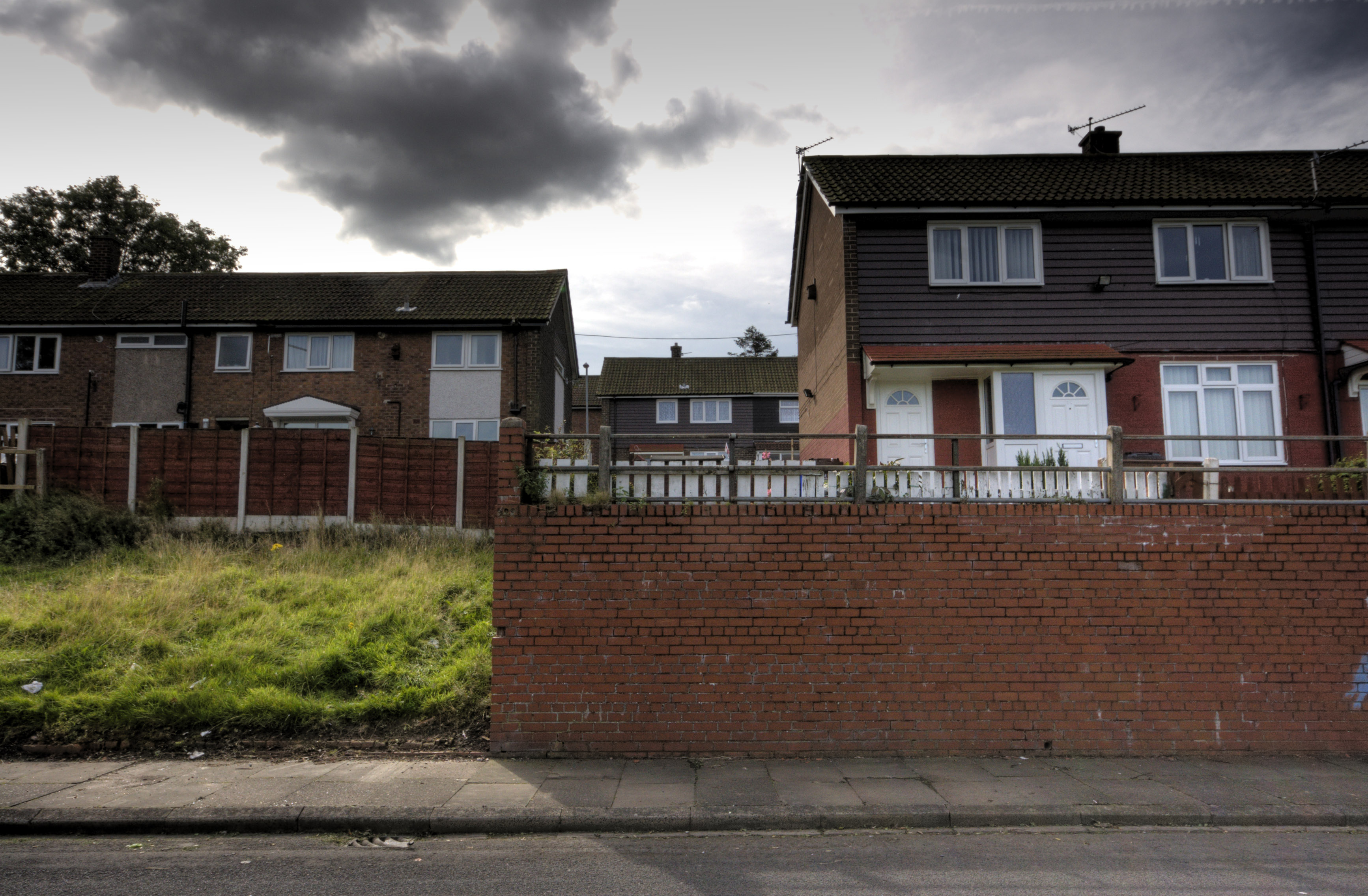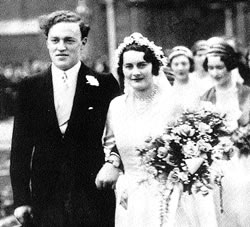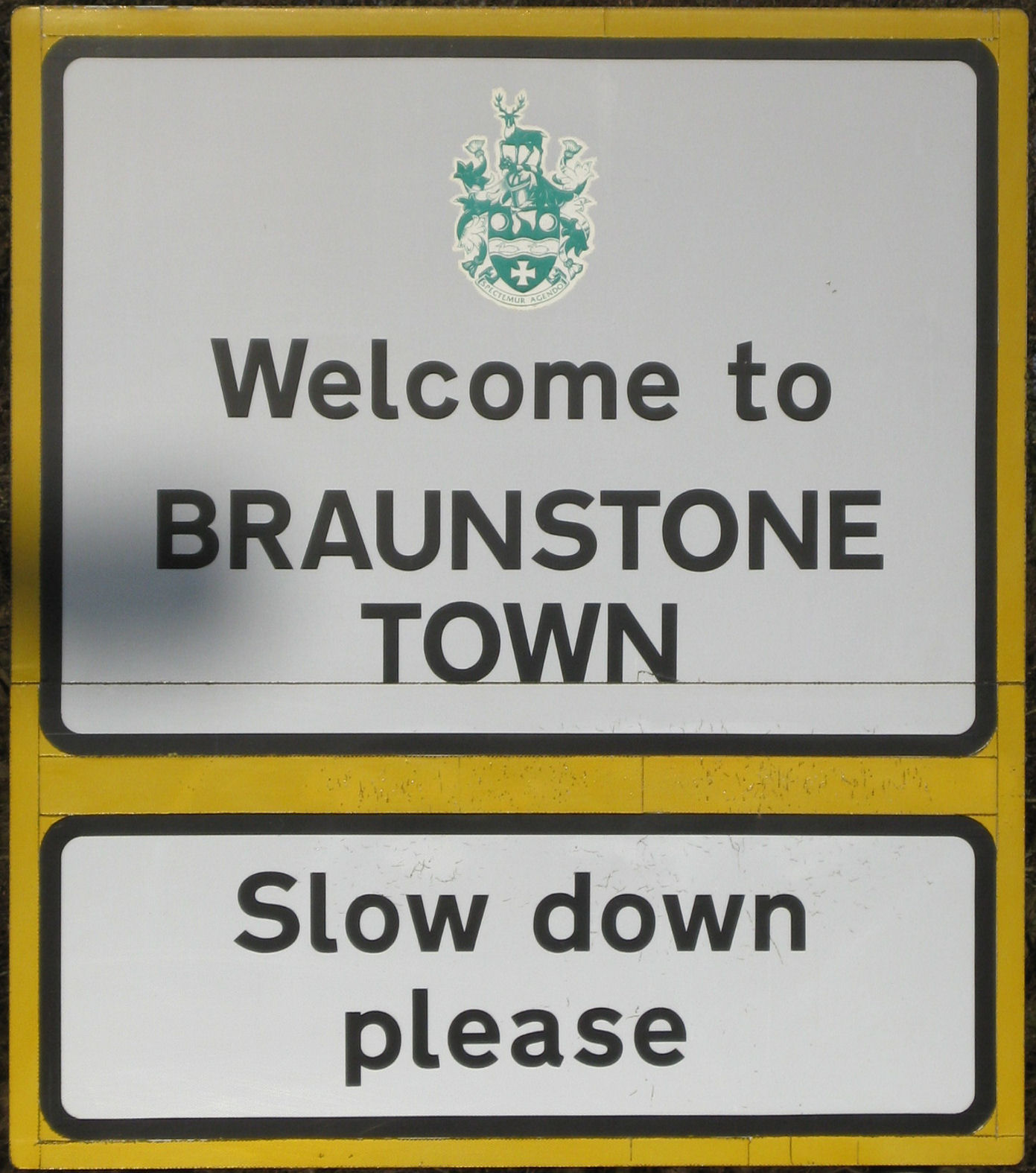|
Frank Beck (sex Offender)
Frank Beck (19 July 1942 – 31 May 1994) was an English convicted child sex offender. He was employed by the Leicestershire County Council as the officer-in-charge of several children's homes in Leicestershire, between 1973 and 1986. Though holding only a 'middle management' grade within the hierarchy of Leicestershire Social Services, Beck quickly established an esteemed reputation among his professional peers as an innovative, dynamic and extraordinarily effective practitioner in dealing with the emotional and behavioural complexities of troubled young people placed in his charge. Beck was later at the centre of Britain's biggest investigation into institutional child abuse, between 1989 and 1991. Background and route into social work Born in Salisbury, Beck was raised in Thornton Heath, Croydon, the son of a train driver and the youngest of five children. Leaving secondary modern school without any qualifications, Beck trained to be a pig keeper and spent three years working ... [...More Info...] [...Related Items...] OR: [Wikipedia] [Google] [Baidu] |
Salisbury
Salisbury ( ) is a cathedral city in Wiltshire, England with a population of 41,820, at the confluence of the rivers Avon, Nadder and Bourne. The city is approximately from Southampton and from Bath. Salisbury is in the southeast of Wiltshire, near the edge of Salisbury Plain. Salisbury Cathedral was formerly north of the city at Old Sarum. The cathedral was relocated and a settlement grew up around it, which received a city charter in 1227 as . This continued to be its official name until 2009, when Salisbury City Council was established. Salisbury railway station is an interchange between the West of England Main Line and the Wessex Main Line. Stonehenge is a UNESCO World Heritage Site and is northwest of Salisbury. Name The name ''Salisbury'', which is first recorded around the year 900 as ''Searoburg'' ( dative ''Searobyrig''), is a partial translation of the Roman Celtic name ''Sorbiodūnum''. The Brittonic suffix ''-dūnon'', meaning "fortress" (in reference ... [...More Info...] [...Related Items...] OR: [Wikipedia] [Google] [Baidu] |
Leicester Forest East
Leicester Forest East (LFE) is a large suburban village in Leicestershire, England, west of Leicester, straddling the M1 motorway. It is part of the Blaby district. Leicester Forest East is a popular location among commuters and young families. It was developed primarily between 1920 and 1985, seeing major developments constructed along the Hinckley Road ( A47) and to the south-east of the M1 throughout the 1930s. Large-scale housing developments took place in the 1960s, to the north-east and west of the M1 motorway. In the 1980s, a large housing project was constructed at the western edge of the settlement. The village takes its name from the ancient Leicester Forest. The streets through the housing developments to the north-east of the M1 take their names from Ann Packer and Robbie Brightwell, Olympic medalists in the 1964 Tokyo games. Amenities There are local shopping facilities at the eastern end of the community, including a newsagent, a post office, a bank, a small C ... [...More Info...] [...Related Items...] OR: [Wikipedia] [Google] [Baidu] |
Birmingham Six
The Birmingham Six were six Irishmen who were each sentenced to life imprisonment in 1975 following their false convictions for the 1974 Birmingham pub bombings. Their convictions were declared unsafe and unsatisfactory and quashed by the Court of Appeal on 14 March 1991. The six men were later awarded financial compensation ranging from £840,000 to £1.2 million. Birmingham pub bombings The Birmingham pub bombings took place on 21 November 1974 and were attributed to the Provisional Irish Republican Army (IRA). Improvised explosive devices were placed in two central Birmingham pubs: the Mulberry Bush at the foot of the Rotunda, and the Tavern in the Town – a basement pub in New Street. The resulting explosions, at 20:25 and 20:27, collectively were the most deadly attacks in the UK since World War II (until surpassed by the Denmark Place fire in 1980); 21 people were killed (ten at the Mulberry Bush and eleven at the Tavern in the Town) and 182 people were injured. Arr ... [...More Info...] [...Related Items...] OR: [Wikipedia] [Google] [Baidu] |
Guildford Four
Guildford () is a town in west Surrey, around southwest of central London. As of the 2011 census, the town has a population of about 77,000 and is the seat of the wider Borough of Guildford, which had around inhabitants in . The name "Guildford" is thought to derive from a crossing of the River Wey, a tributary of the River Thames that flows through the town centre. The earliest evidence of human activity in the area is from the Mesolithic and Guildford is mentioned in the will of Alfred the Great from . The exact location of the main Anglo-Saxon settlement is unclear and the current site of the modern town centre may not have been occupied until the early 11th century. Following the Norman Conquest, a motte-and-bailey castle was constructed, which was developed into a royal residence by Henry III. During the late Middle Ages, Guildford prospered as a result of the wool trade and the town was granted a charter of incorporation by Henry VII in 1488. The River Wey Navigation ... [...More Info...] [...Related Items...] OR: [Wikipedia] [Google] [Baidu] |
Leicester Mercury
The ''Leicester Mercury'' is a British regional newspaper for the city of Leicester and the neighbouring counties of Leicestershire and Rutland. The paper began in the 19th century as the ''Leicester Daily Mercury'' and later changed to its present title. Early history The paper was founded by James Thompson, already proprietor of the ''Leicester Chronicle'' which he had merged with the ''Leicestershire Mercury'' ten years earlier. The ''Leicester Daily Mercury'' would be an evening paper, the first to be published in Leicester, and give extra support to the Liberal Party in the forthcoming general election. The first issue was published on 31 January 1874 from the paper's offices at 3 St Martin's, consisting of four pages of five columns each. The paper had a staff of 25 and a circulation of 5000. Recent history Along with the rest of Britain's regional daily press, the ''Leicester Mercury'' has struggled in circulation terms over the past two decades. The paper had an averag ... [...More Info...] [...Related Items...] OR: [Wikipedia] [Google] [Baidu] |
Myra Hindley
The Moors murders were carried out by Ian Brady and Myra Hindley between July 1963 and October 1965, in and around Manchester, England. The victims were five children—Pauline Reade, John Kilbride, Keith Bennett, Lesley Ann Downey, and Edward Evans—aged between 10 and 17, at least four of whom were Sexual assault, sexually assaulted. The bodies of two of the victims were discovered in 1965, in graves dug on Saddleworth Moor; a third grave was discovered there in 1987, more than twenty years after Brady and Hindley's trial. Bennett's body is also thought to be buried there, but despite repeated searches it remains undiscovered. The pair were charged only for the murders of Kilbride, Downey and Evans, and received life imprisonment, life sentences under a whole life tariff. The investigation was reopened in 1985 after Brady was reported as having confessed to the murders of Reade and Bennett. After confessing to these additional murders, Brady and Hindley were taken separately t ... [...More Info...] [...Related Items...] OR: [Wikipedia] [Google] [Baidu] |
Lord Longford
Francis Aungier Pakenham, 7th Earl of Longford, 1st Baron Pakenham, Baron Pakenham of Cowley, (5 December 1905 – 3 August 2001), known to his family as Frank Longford and styled Lord Pakenham from 1945 to 1961, was a British politician and social reformer. A member of the Labour Party, he was one of its longest-serving politicians. He held cabinet positions on several occasions between 1947 and 1968. Longford was politically active until his death in 2001. A member of an old, landed Anglo-Irish family, the Pakenhams (who became Earls of Longford), he was one of the few aristocratic hereditary peers ever to serve in a senior capacity within a Labour government. Longford was famed for championing social outcasts and unpopular causes. He is especially notable for his lifelong advocacy of penal reform. Longford visited prisons on a regular basis for nearly 70 years until his death. He advocated for rehabilitation programmes and helped create the modern British parole system i ... [...More Info...] [...Related Items...] OR: [Wikipedia] [Google] [Baidu] |
Anthony Scrivener
Anthony Frank Scrivener QC (31 July 1935 – 27 March 2015) was a British barrister. His high profile clients led him to becoming one of the highest paid barristers in the UK, commanding the first £1 million brief. He spent a period as chair of the Bar Council, where he pushed for reform. Biography Frank Bertram Scrivener was born in Canterbury, Kent on 31 July 1935. His father, Frank Bertram Scrivener was a shopkeeper and ironmonger and his mother was Edna Isabella Agnes, née Mather. Known to his friends as 'Scriv', he added “Anthony” to his name. He was educated at Kent College, and University College London, where he read law and graduated in 1957, then being called to the bar at Gray's Inn in 1958. He lectured in law in Ghana for two years, returned to the UK and became a QC in 1975. He was elected chairman of the Bar Council in 1990 and used the appointment to push through reforming measures. [...More Info...] [...Related Items...] OR: [Wikipedia] [Google] [Baidu] |
Leicester Crown Court
The Leicestershire Law Courts is a Crown Court venue, which deals with criminal cases, as well as a County Court venue, which deals with civil cases, in Wellington Street, Leicester, England. History Until the early 1980s, criminal court hearings were held in the Great Hall at Leicester Castle. However, as the number of court cases in Leicester grew, it became necessary to commission a more substantial courthouse for criminal court hearings. The site selected by the Lord Chancellor's Department had accommodated a series of rows of terraced housing (Slawson Street, Ashwell Street and Elton Street) before the area was cleared. The new building was designed by the Property Services Agency in the Modernist style, built in red brick and was opened in March 1981. Originally established to deal with Crown Court hearings only, it was extended to accommodate the County Court hearings as well in the early 1990s. The design involved an asymmetrical main frontage facing onto Wellington ... [...More Info...] [...Related Items...] OR: [Wikipedia] [Google] [Baidu] |
Braunstone Town
Braunstone is a civil parish and is the largest parish within the district of Blaby in Leicestershire, England, now known as the Town of Braunstone or more commonly, Braunstone Town. In 2007 the population was around 15,000. There are around 7,500 households including Thorpe Astley. At the 2011 census the population of the civil parish had increased to 16,850. Braunstone is mentioned in the Domesday Book of 1086, giving a population of "two sokemen and four villeins". The village remained a small settlement (population 238 in 1921) until 1925 when the Leicester Corporation compulsorily purchased the bulk of the Winstanley Braunstone Hall estate. It is just outside the city boundary of Leicester, and the part of the old civil parish now inside the city boundary is also called Braunstone. This part of the parish, which contains a large council estate was detached in 1935 from the Blaby district and Braunstone Parish to become part of the county borough of Leicester, hence the ... [...More Info...] [...Related Items...] OR: [Wikipedia] [Google] [Baidu] |
Leicestershire Constabulary
Leicestershire Police is the territorial police force responsible for policing Leicestershire and Rutland in England. Its headquarters are at Enderby, Leicestershire. History Leicestershire Police was formed in 1839. In 1951 it amalgamated with Rutland Constabulary to form Leicestershire and Rutland Constabulary and in 1967 merged with Leicester City Police to form Leicester and Rutland Constabulary. After the Local Government Act 1972 came into force in 1974 it was renamed Leicestershire Constabulary. In 2012 it changed to Leicestershire Police to be 'in keeping with modern policing'. In 1965, Leicestershire and Rutland Constabulary had an establishment of 748 officers and an actual strength of 659. Proposals made by the Home Secretary on 20 March 2006, would have seen the force merge with the other four East Midlands forces to form a strategic police force for the entire region. These plans were dropped in 2007. In 2015, the force attempted to carry out a covert CCTV ... [...More Info...] [...Related Items...] OR: [Wikipedia] [Google] [Baidu] |
Loughborough
Loughborough ( ) is a market town in the Charnwood borough of Leicestershire, England, the seat of Charnwood Borough Council and Loughborough University. At the 2011 census the town's built-up area had a population of 59,932 , the second largest in the county after Leicester. It is close to the Nottinghamshire border and short distances from Leicester, Nottingham, East Midlands Airport and Derby. It has the world's largest bell foundry, John Taylor Bellfounders, which made bells for the Carillon War Memorial, a landmark in the Queens Park in the town, of Great Paul for St Paul's Cathedral, and for York Minster. History Medieval The earliest reference to Loughborough occurs in the Domesday Book of 1086, which calls it ''Lucteburne''. It appears as ''Lucteburga'' in a charter from the reign of Henry II, and as ''Luchteburc'' in the Pipe Rolls of 1186. The name is of Old English origin and means "Luhhede's ''burh'' or fortified place". Industrialisation The first sign of in ... [...More Info...] [...Related Items...] OR: [Wikipedia] [Google] [Baidu] |



.jpg)




